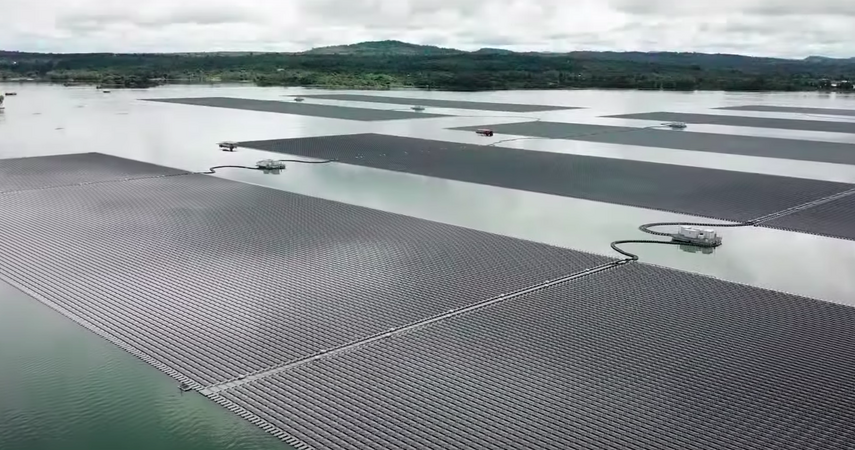The country’s first floating solar farm has been commissioned in northeastern Thailand. This is the first step in the planned reduction of the Asian kingdom’s dependence on fossil fuels and the expansion of its renewable energy infrastructure.
The paintings consist of a total of more than 144 thousand. floating solar panels Sirindhorn Dam has been placed on the surface of the reservoir in Ubon Ratchathani province on the border with Laos. The solar farm, launched in October, covers an area of 121 hectares.
According to Singaporean television CNA, The floating solar power plant produces 45 megawatts of electricity and operates on a hybrid system With a hydroelectric power plant already in operation with which it shares transmission lines. The energy obtained in this way is sent to three neighboring districts. The already existing hydroelectric power station has a capacity of 36 megawatts.
The innovative solar farm was built by a consortium that includes Bangkok-based B. Grim Power and the state-owned China Power Corporation.
More floating solar farms will be built
EGAT, the Thai electricity production regulator, describes the entire structure as the world’s largest solar hydroelectric hybrid plant. The authorities announced that v Over the next 16 years, eight floating solar farms will be built on tanks across the country. In April, Reuters quoted the head of the construction department, who said that after implementing this plan, hybrid power plants will reach approximate capacity. MW.
According to CNA, the energy sector is responsible for about three-quarters of the carbon dioxide produced in Thailand. For decades, the country relied on natural gas for energy. About 20 percent. Electricity is generated there in Coal power plants.
Prasertsak Cherngchawano, Vice President of Power Plant Expansion and Renewable Energy at EGAT . announced Plans to close lignite power plants in northern Thailand in the near future. This is expected to happen when the country builds up enough capacity to generate electricity from renewable sources.
To counteract the negative effects of climate change, Thailand, home to nearly 70 million people, has announced a reduction in greenhouse gas emissions and carbon neutrality between 2065 and 2070. However, some experts point out that it is very little. Many developed countries as well Neighboring Laos and Malaysia have announced that they will be carbon neutral by 2050.
In October, Thai Prime Minister Prayut Chan-ocha said his country would seek financial support and expertise from rich countries to further tap the potential of renewables.
Scientists warn that to avoid the catastrophic effects of global warming, the world must reduce greenhouse gas emissions to a point that ensures that the average increase in global temperatures does not exceed 1.5 degrees Celsius above pre-industrial levels.
According to forecasts published by the US Central Climate Organization in 2019, due to rising temperatures Sea-level rise could flood Bangkok, Thailand’s capital, by 2050.

“Problem solver. Proud twitter specialist. Travel aficionado. Introvert. Coffee trailblazer. Professional zombie ninja. Extreme gamer.”




More Stories
Below is the schedule of pension payments as of July 2022. Find out what benefits you will get after the changes [17.07.2022]
Overview of the new electric sports cars for the Hyundai Ioniq 5 N and Ioniq 6 N
Portugal has launched a floating solar power plant. It is the largest structure of this type in Europe – Economy